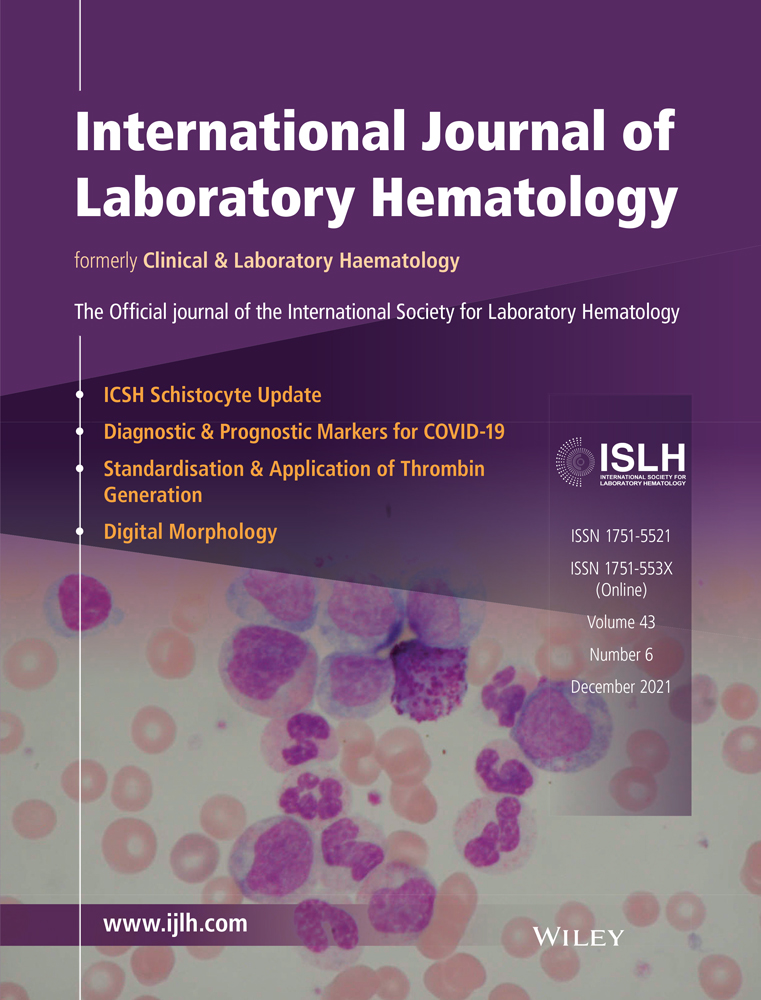Alinity hq platelet results are equivalent with the international reference method in thrombocytopenic samples
Abstract
Introduction
Accurate and precise platelet (PLT) count is critical for the appropriate management of patients with thrombocytopenia. This study evaluated the performance of PLT counting with the Abbott Alinity hq hematology analyzer, which utilizes multi-dimensional optical technology.
Methods
Imprecision, linearity, and accuracy were assessed per CLSI guidelines. Alinity hq PLT results were compared to the international flow cytometry reference method (IRM) in the concentration range of 6.3 to 103.0 × 109/L. Additional comparisons were made with Sysmex XN-3000 PLT counts: impedance (PLT-I), optical (PLT-O), and optical fluorescent (PLT-F) methods.
Results
The average within-run %CV was 4.7% on patient samples with PLT concentrations ranging from 13.1 to 41.7 × 109/L, and the within-laboratory %CV was 3.6% at the level of 68.2 × 109/L. Linearity evaluation indicated a maximum deviation of 3.1% from the linear fit in the range of 0.1 to 316.8 × 109/L. Comparison between Alinity hq and the IRM PLT counts yielded a correlation coefficient of 0.99 and predicted bias of 0.0 and −0.5 × 109/L at 10.0 and 20.0 × 109/L transfusion thresholds, respectively. Alinity hq PLT counts also correlated well with Sysmex PLT counts, with strongest correlation obtained with PLT-F and PLT-O (r = .99) methods.
Conclusion
This study demonstrated excellent analytical performance of Alinity hq PLT counting in thrombocytopenic samples, equivalency with the IRM and strong agreement with Sysmex PLT-F and PLT-O methods. The Alinity hq multi-dimensional optical PLT count is available with every CBC without additional reagents and may help promote efficiency in clinical laboratories.
CONFLICT OF INTEREST
M. A. Lifson: Employee of Abbott; G. Lakos: Employee of Abbott; T. Arai: No conflict of interest; T. Mitsuhashi: No conflict of interest; M. Wakui: No conflict of interest; M. Murata: No conflict of interest.
Open Research
DATA AVAILABILITY STATEMENT
The data that support the findings of this study are available on request from the corresponding author. The data are not publicly available due to privacy or ethical restrictions.




